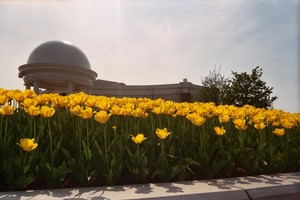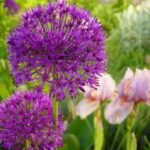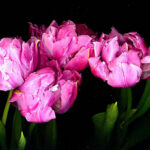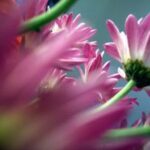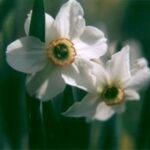Annual, Biennial, Perennial, Bulb. there are so many choices. How is a gardener to choose?
Gardeners enjoy working with the flowers in the landscape, practicing landscape design. When planning the garden, gardeners consider many choices. There are so many beautiful plants,it is often difficult to limit yourself to just a few. When designing a garden, the gardener considers the size and shape of the plant, plant habits, the habitat, available sunlight, color of the leaves, color of the blooms, the blooming cycle and the lifespan of the plant.
Flowers enjoy different lifespans, which gardeners take into consideration when planning their garden design. Annuals give a full summer of color but live only one season. Perennials return from several seasons, but can take a while to get a start. . Gardeners who want a full season of ever changing beauty in the garden, may choose to mix the types of flowers. Perennials are good anchors for the garden, while merry annuals can change the look of the landscape year after year.
Annuals
Annuals have short merry lives. These colorful plants do everything in one season. Annuals germinate, sprout, bloom., produce seeds and die all in one season. Annuals spend all their energy producing seeds for the next generation before they die in the cold weather. Annuals are useful, easy-to-grow flowers that reward the gardener colorful blooms all summer long.
Most annuals are easy to grow and care for, making them a gardener’s delight. Annuals can be grown from seed, or purchased as blooming plants from garden centers. Popular annuals include Ageratum, Annual Phlox, Calliopsis, Cockscomb, Cosmos, Impatiens, Marigolds, Moss Rose, Nasturtium, Petunia, Spider flower, Sweet Alyssum, Geraniums, Blue and Yellow Lupines and Zinnias.
Biennials
Biennials are not seen as ofter as annuals and perennials. Biennials are plants whose lives extend over two growing seasons. Some biennials reseed themselves, so they act like a perennial, but you can’t count on that. I have had biennials that came back for a few years before fading away. Biennials include Canterbury Bells, Common Foxglove, Forget-Me-Not, Evening Primrose, Viola , Iceland Poppy and Money Plant.
Perennials
Perennials may not live forever, but they do tend to return for at least a few seasons. Perennials are probably best purchased as a grown plant, as they don’t bloom in their first year. Ready to bloom perennials can be purchased from catalogs or a the local garden center or landscaping nursery. The adage about perennials is “The first year they sleep, the second year they creep, the third year they leap.” according to Burpee’s The Complete Flower Gardener. These hardy plants die to the ground in the cold weather, but re-sprout and return the following season.
As a general rule, perennials enjoy a shorter blooming season than annuals. Their blooms are sometimes more muted and subtle that annual plants. The shapes are more complicated and interesting that annuals. Much of the beauty of the perennial plant comes from the shapes and textures formed by the plant and the leaves. Long-lasting perennials include Astilbes, Bleeding Heart, Daylilies, Gas Plant, Hardy Geraniums, Hostas, Lavender, Monkshood, Peonies, Purple Coneflowers, Ragged Coneflowers Sedum/Stonecrops and Yarrow.
Bulbous Flower
Flower grown from bulbs grow from specialized underground structures that go dormant when they are not growing. Most plants grown from bulbs return year after year, in the right growing conditions. Many bulbs will multiply underground. The bulbs can be divided and replanted. There are different types of bulbous flowers, including true bulbs, Corms, Rhizomes and Tuberous plants. Bulbous pants include Tulips, Daffodils, Crocuses, Iris, Lily, Grape Hyacinth, Grecian Windflower, Hyacinth, Siberian Squill, Snowdrops, Spanish Bluebell, Spring Starflower, Stars of Bethlehem, Glories-in-the-Snow and Winter Aconite.
Many gardeners incorporate all of these types of flowers in their landscape. Consider the blooming cycle and likely lifespan of a plant when planning a garden design.
Resources:
Burpee’s :”The Complete Flower Gardener, The Comprehensive Guide to Growing Flowers Organically” by Karan Davis Cutler and Barbara W. Ellis
